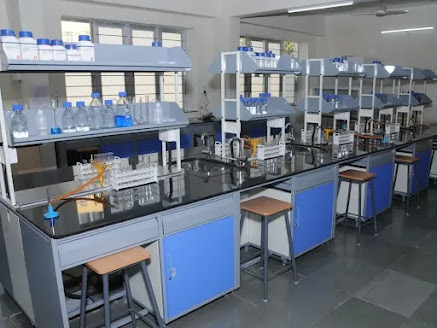Laboratory furniture plays a crucial role in creating a functional and efficient workspace for scientists, researchers, and technicians in laboratories. Whether it's a small educational lab or a large industrial facility, certain common laboratory furniture pieces are essential for conducting experiments, performing analyses, and storing equipment and chemicals safely. In this blog post, we will explore some of the most common laboratory furniture found in laboratories, focusing on their importance and functionality.
1.Laboratory Benches: Laboratory benches are the central workspace in any laboratory. They provide a flat and sturdy surface for conducting experiments, preparing samples, and operating instruments. These benches are typically made of chemical-resistant materials like stainless steel or epoxy resin to withstand exposure to various chemicals. Some benches may also include built-in sinks, gas and water fixtures, and electrical outlets for convenient access to utilities.
2.Laboratory Chairs: Comfortable and ergonomic chairs are essential for researchers and technicians who spend long hours working in the laboratory. Adjustable chairs with proper back support and height adjustment options are preferred to ensure proper posture and reduce the risk of musculoskeletal problems.
3.Fume Hoods: Fume hoods are enclosed workspaces that protect laboratory personnel from harmful fumes, vapors, and dust generated during experiments. They help maintain a safe and clean working environment by effectively venting out hazardous substances. Fume hoods are equipped with a fan and exhaust system that draws air from the hood, filters it, and releases it outside the laboratory or recirculates it after purification.
4.Laboratory Cabinets and Storage Units: Laboratories require ample storage space to organize and store equipment, glassware, chemicals, and samples safely. Cabinets and storage units are designed with chemical-resistant materials and adjustable shelves to accommodate various sizes of items. They may also have lockable doors to ensure secure storage of hazardous substances.
5.Laboratory Carts and Trolleys: Carts and trolleys are used to transport equipment, samples, and chemicals within the laboratory. They are designed with sturdy frames, wheels, and handles for easy maneuverability. Some carts may include additional features like shelves, drawers, or built-in power outlets to enhance functionality.
6.Laboratory Sinks: Sinks with running water are essential for laboratory procedures that require frequent washing and rinsing. They facilitate the disposal of chemicals and contaminants safely. Laboratory sinks are typically made of stainless steel or other chemical-resistant materials and may include additional features such as built-in drainage systems or eyewash stations for emergency use.
7.Laboratory Shelving: Laboratory shelving units provide additional storage space for equipment, glassware, and chemicals. They are designed to be adjustable, allowing for customization based on the items being stored. Shelving units are often made of corrosion-resistant materials to withstand the storage of chemicals and ensure durability.
8.Laboratory Tables: In addition to benches, laboratories often have dedicated tables for specific purposes. These tables may be designed for microscopy work, sample preparation, or specialized equipment. They are typically equipped with vibration isolation features, electrical outlets, and other necessary utilities to support specific experiments or instruments.
9.Safety Equipment: Safety equipment such as fire extinguishers, emergency showers, and eyewash stations should be readily accessible in laboratories. While not furniture in the traditional sense, these items are crucial for maintaining a safe working environment and addressing emergencies effectively.
In conclusion, laboratory furniture Libya is essential for creating a functional and safe workspace in laboratories. From benches and chairs to fume hoods and storage units, each piece of furniture serves a specific purpose in supporting scientific research, experimentation, and analysis. By investing in high-quality laboratory furniture, scientists and researchers can optimize their productivity, maintain safety standards, and ensure the smooth operation of their experiments and procedures.

Comments
Post a Comment